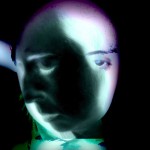This innovative new series explores musical training from conception to grave. Learn how music you heard in-utero affected your musical tastes today. Encourage musical creativity in your child or students with easy music tech tools and exercises. Discover how cultures around the globe use music in the classroom. Find ways to reach special needs children with the joys of sound.
The Music & Life series will help teachers, parents, musicians, and medical professionals understand how music affects the different stages of life. Practical advice and easy technology tools and musical exercises will help you apply contemporary science. Written by a music educator with over a decade’s experience, and a specialization in at-risk education and multicultural arts, the Music & Life Series will give you the tools you need to make the most of music in everyday life.
Who is this series for?
Teachers

Learn valuable music and technology tools that will help you use music in your classroom, no matter what the subject area. Find musical activities that will reach special needs students, and discover new ways to apply musical concepts in the classroom.

Parents
Find the answer to many of your musical questions. Learn how to encourage music appreciation in your child. Discover the myths and facts about the Mozart Effect. Find ways to teach your child music, even if you cannot read a note. Use music to reach a child with special needs, and explore how cultures around the world use music to teach children about life. You can experience the joys of music with your child. It’s as easy as do-re-mi!
Musicians
Explore the fascinating world of music in a brand new way. Gain new insight into how music and sound affect you biologically, psychologically, and mentally. Learn about music and global cultures, and how the songs you heard as a baby may have impacted your choices in life. Open your ears and open your mind. Discover new technology tools that will blow your mind.

Medical Professionals
Enjoy this exciting series that explores the process of learning from a musical perspective. Learn how to apply music in your daily practice. Try new music technology tools and insightful exercises that will challenge you to understand music from a different perspective.
Coming up in Music & Life
Some of the questions we will discuss include:
- What are the controversies behind the “Mozart Effect”?
- Can an out-of-tune parent raise a musical child?
- What does a baby really understand about music?
- How does culture affect ear training?
- What is the hidden connection between music and language?
- How does music reach the special needs child?
Each article will give you the knowledge and tools you need to give your child or student the best musical training. Learn how a newborn’s brain absorbs classical music, what other cultures teach their children, and how the lullabies you sing today will affect your child tomorrow. If your child has special needs, you will learn how specific musical activities can enhance your child’s life.
Expand your musical horizons. Discover the mysteries of music.
Explore the unknown in Music & Life.
About the author
Sabrina Peña Young has over a decade’s music education experience working with students from early childhood to graduate school. Young spent several years working with at-risk and inner city youth, teaching at Tampa’s MOSI School for At-Risk Students, the Special Place (inner city arts camp), and the nationally-recognized ArtREACH program, a Florida arts program for homeless students founded by the Young at Art Children’s Museum. Young’s educational expertise includes world music, fine art, music technology, music theory/history, and composition. Currently Young teaches Sound Synthesis and Composition at Murray State University in Western Kentucky, USA.
You can read her EasyEarTraining.com articles here and find out more about her work at her official website.
You can discuss this series in our dedicated forum or in the comments below!
To be notified when there are new articles in the series, subscribe using one of the buttons below:











